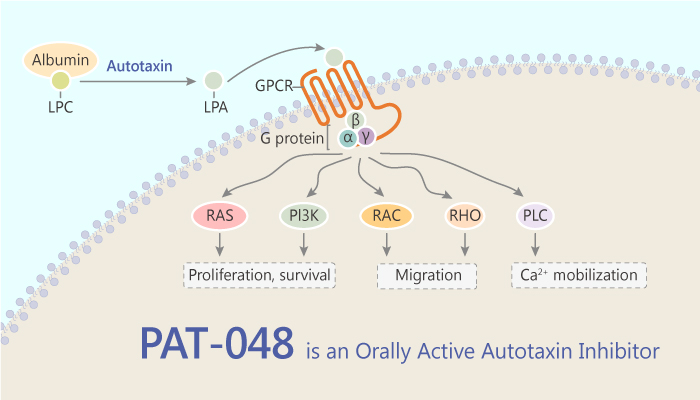Systemic sclerosis is an autoimmune disease of the connective tissue. The symptom is thickening of the skin due to collagen accumulation or injuries to small arteries.
As we all know, signaling pathways play important role in the body. The signaling of LPA (lipid mediator lysophosphatidic acid) with its receptor LPA1 is necessary for dermal fibrosis. In injury skin, the levels of LPA also exist high.
Autotaxin is a LPA-producing enzyme, it converts lysophospholipids to LPA. The enzyme also exhibits increased levels in fibrotic skin. Interestingly, in systemic sclerosis, LPA is an inducer of IL-6 expression, IL-6 in turn causes autotaxin expression, and then autotaxin catalyzes LPA production.
Therefore, inhibition of autotoxin is a potential target to treat dermal fibrosis. We will talk about an autotoxin inhibitor, PAT-048, in the following parts.

PAT-048 is a potent and selective autotoxin inhibitor. It shows an IC50 and IC90 of 20 nM and 200 nM in mouse plasma, respectively.
In the mouse model, PAT-048 inhibits >90% of plasma ATX activity via oral dose of 20 mg/kg once daily for 5 days. Besides, the inhibitor markedly decreases the increased IL-6 mRNA expression.
However, PAT-048 shows no obvious effect on ATX protein levels in the bronchoalveolar lavage fluid of bleomycin-challenged mice. It does not suppress bleomycin-induced LPA production or lung fibrosis.
References:
1. Castelino FV, et al. Arthritis Rheumatol. 2016 Dec;68(12):2964-2974.
2. Black KE, et al. FASEB J. 2016 Jun;30(6):2435-50.